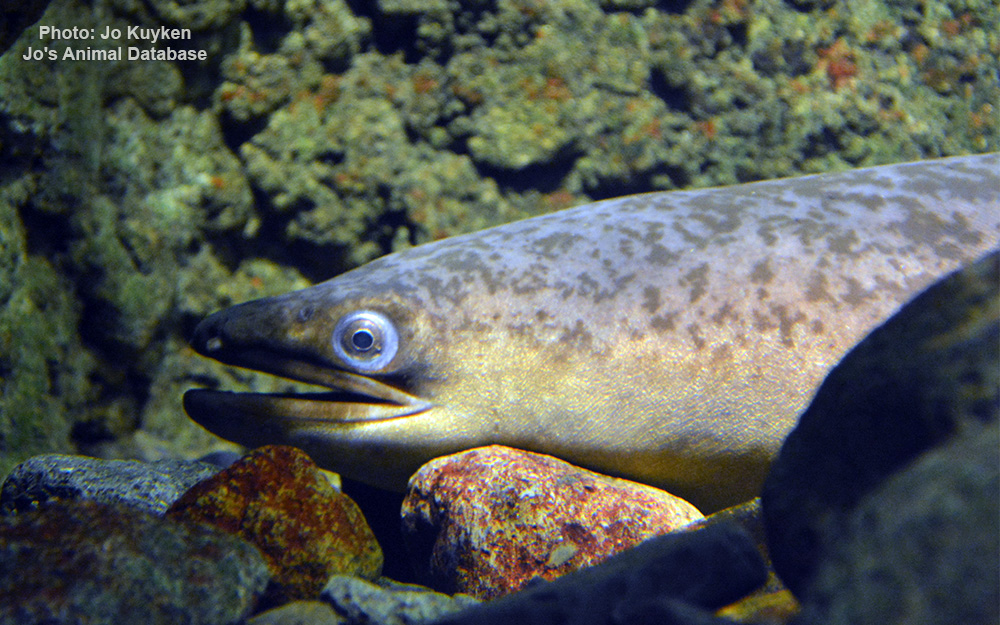Giant mottled eel
(Anguilla marmorata)

Image source: Jo's Animal Database
Classification
General data
The giant mottled eel (Anguilla marmorata), also known as the marbled eel, is a species of tropical anguillid eel that is found in the Indo-Pacific and adjacent freshwater habitats.
Description
Similar to other anguillids, the giant mottled eel is cylindrical with small, well-developed pectoral fins and a protruding lower jaw. The eel has thick, fleshy lips. The eel has dorsal and anal fins that are continuous around the tail, with the origin of the dorsal-fin between the pectoral fins and anus.[3] It has small, oval-shaped scales that are embedded in the skin.
Unlike some other anguillid species, this species has a mottled color. The adult eels are yellow with a greenish-brown to black marbling on their back and a white belly. The young elvers have less visible marbling and are grayish to yellow. The dorsal fin of the marbled eel is closer to the gill opening than to the anus, more anterior than other species of Anguilla. Like all anguillid eels, it does not have pelvic fins. The head is rounded and the snout is depressed. Its teeth are small and in bands. It has a total of 100 to 110 vertebrae.
It can grow up to 2 meters (6.6 ft) for females and 1.5 meters (4.9 ft) for males and can weigh up to 20.5 kilograms (45 lb), making it the largest species of anguillid eels. The marbled eel can live up to about 40 years.
Distribution and habitat
This anguillid species can be found from East Africa to French Polynesia and as far north as southern Japan. In Africa, it may be found within Mozambique and the lower Zambezi River. The giant mottled eel has the widest distribution of all the Anguilla eels. It is usually found in tropical climates between 24°N to 33°S. It has also been found in other more distant regions such as the Galapagos possibly due to abnormal larval transport associated with El Niño-Southern Oscillation events.











